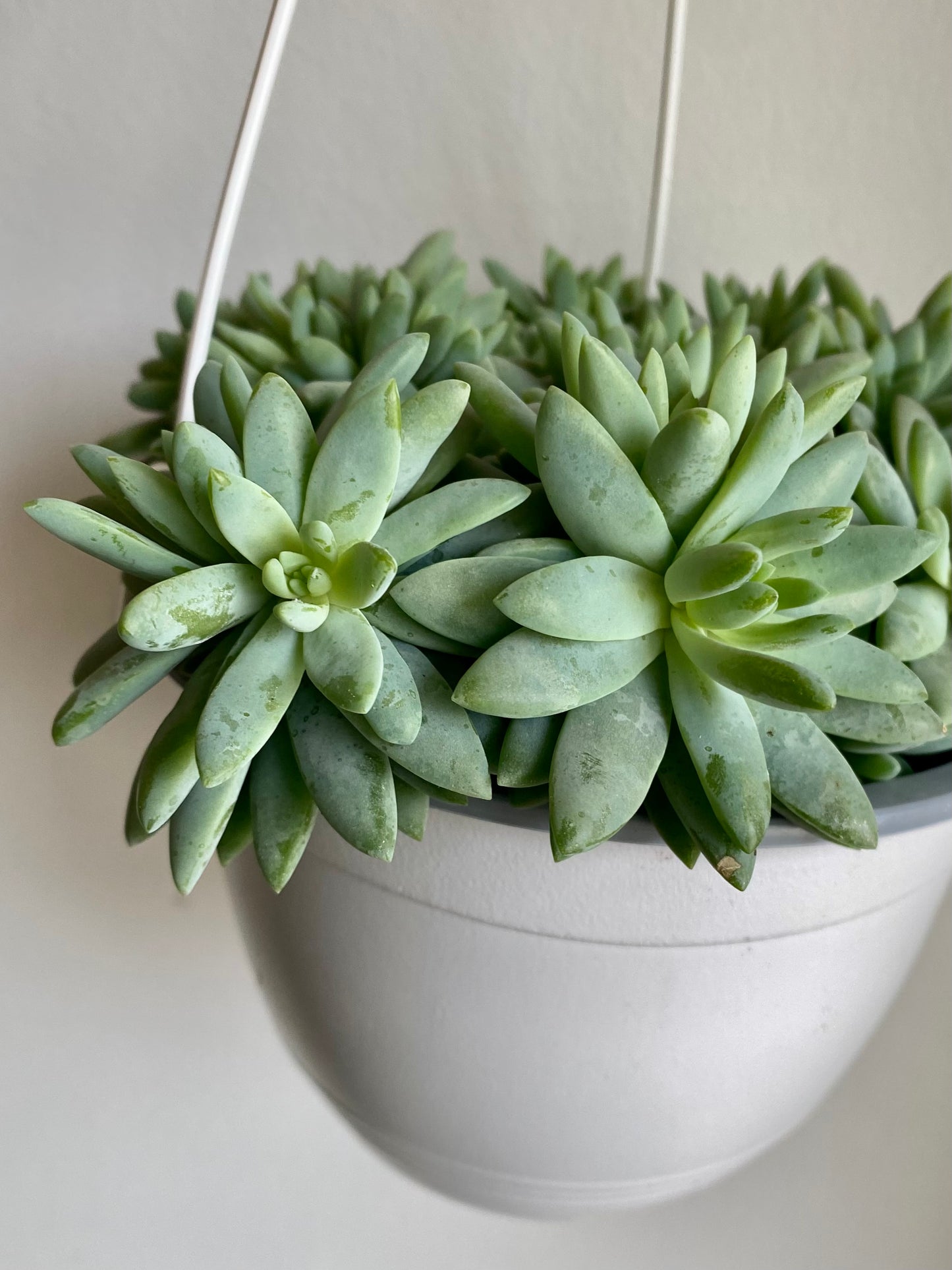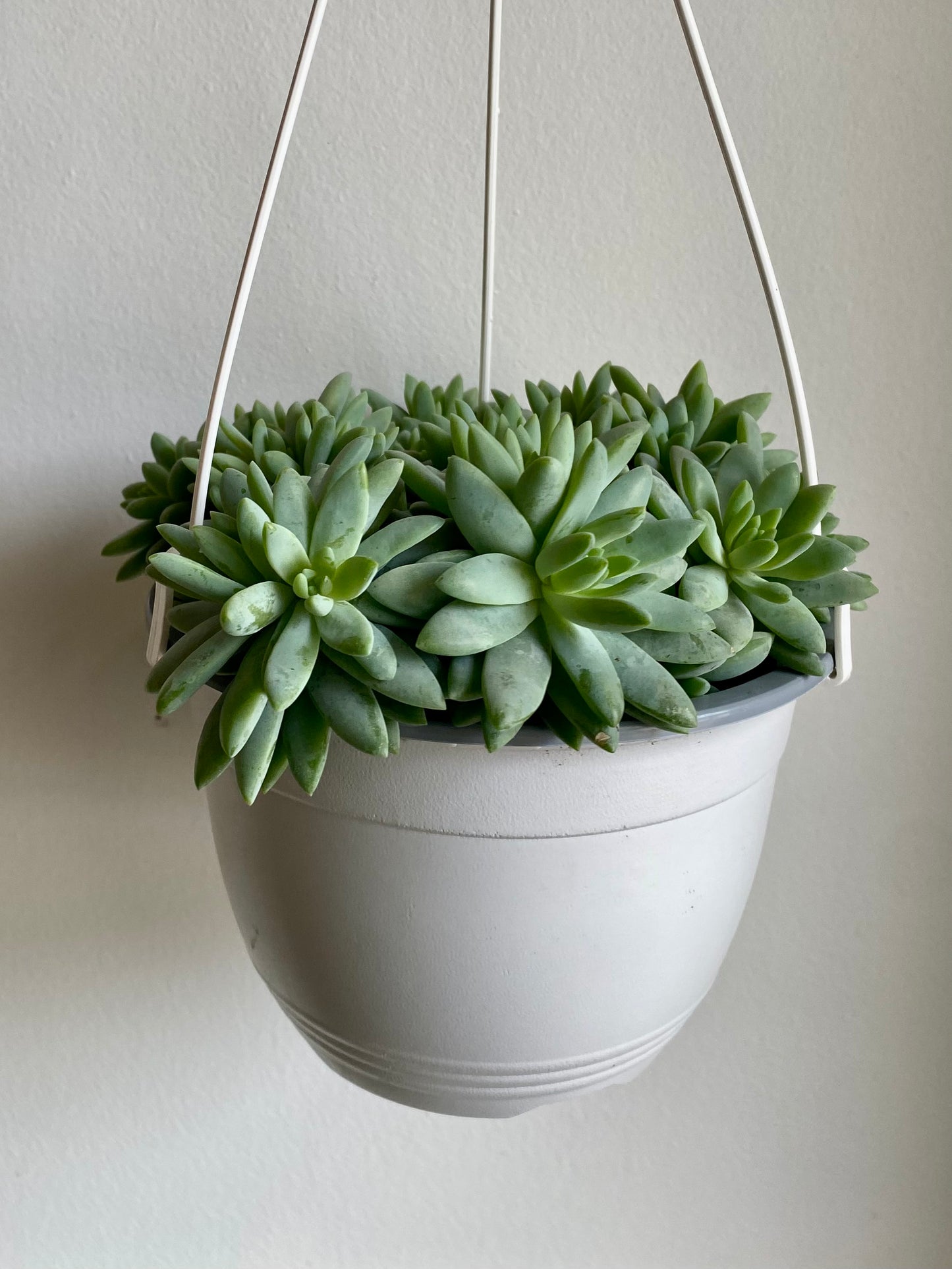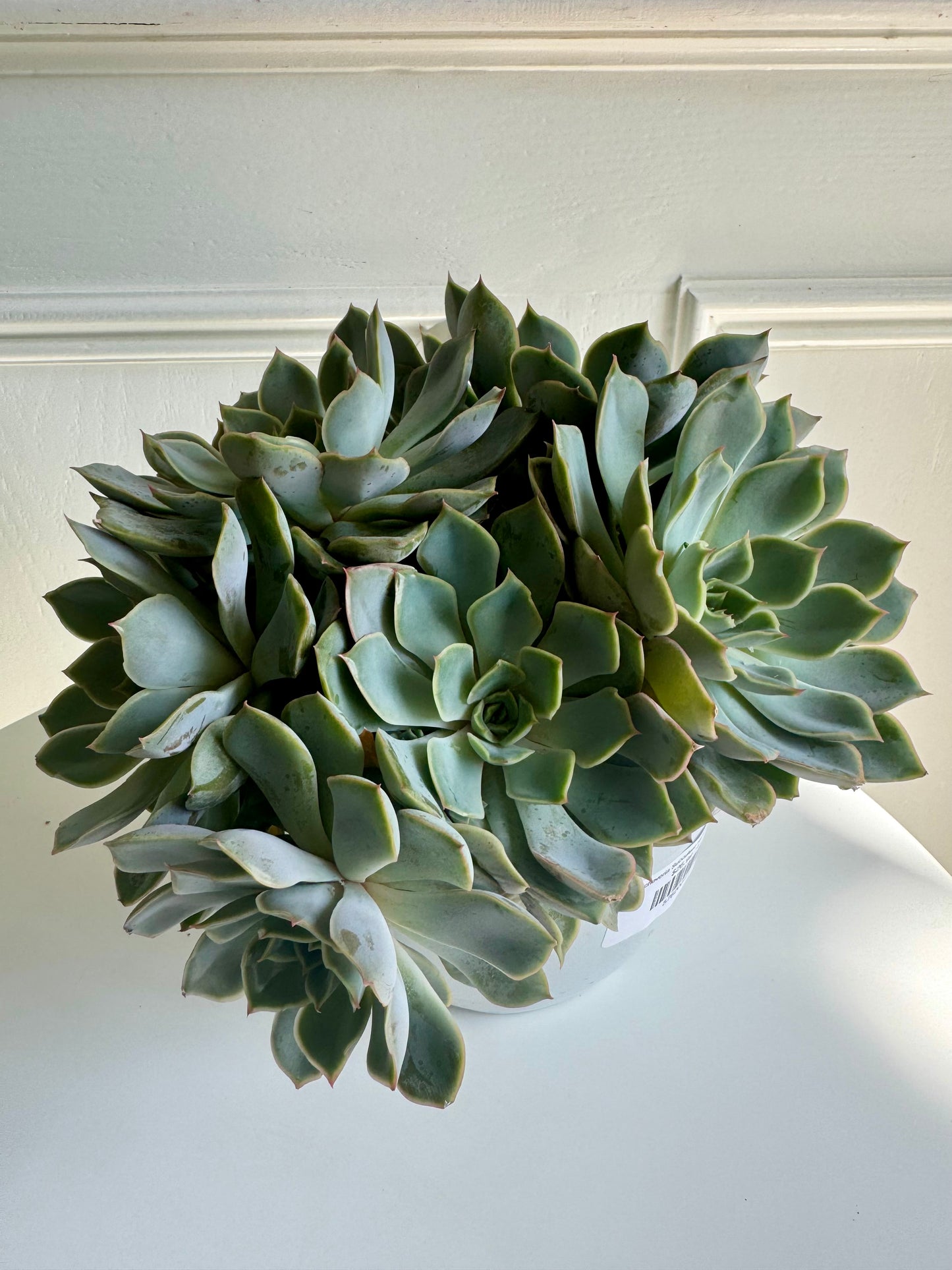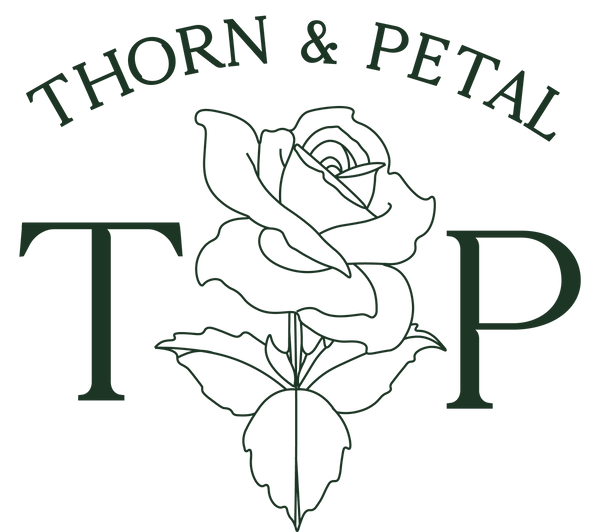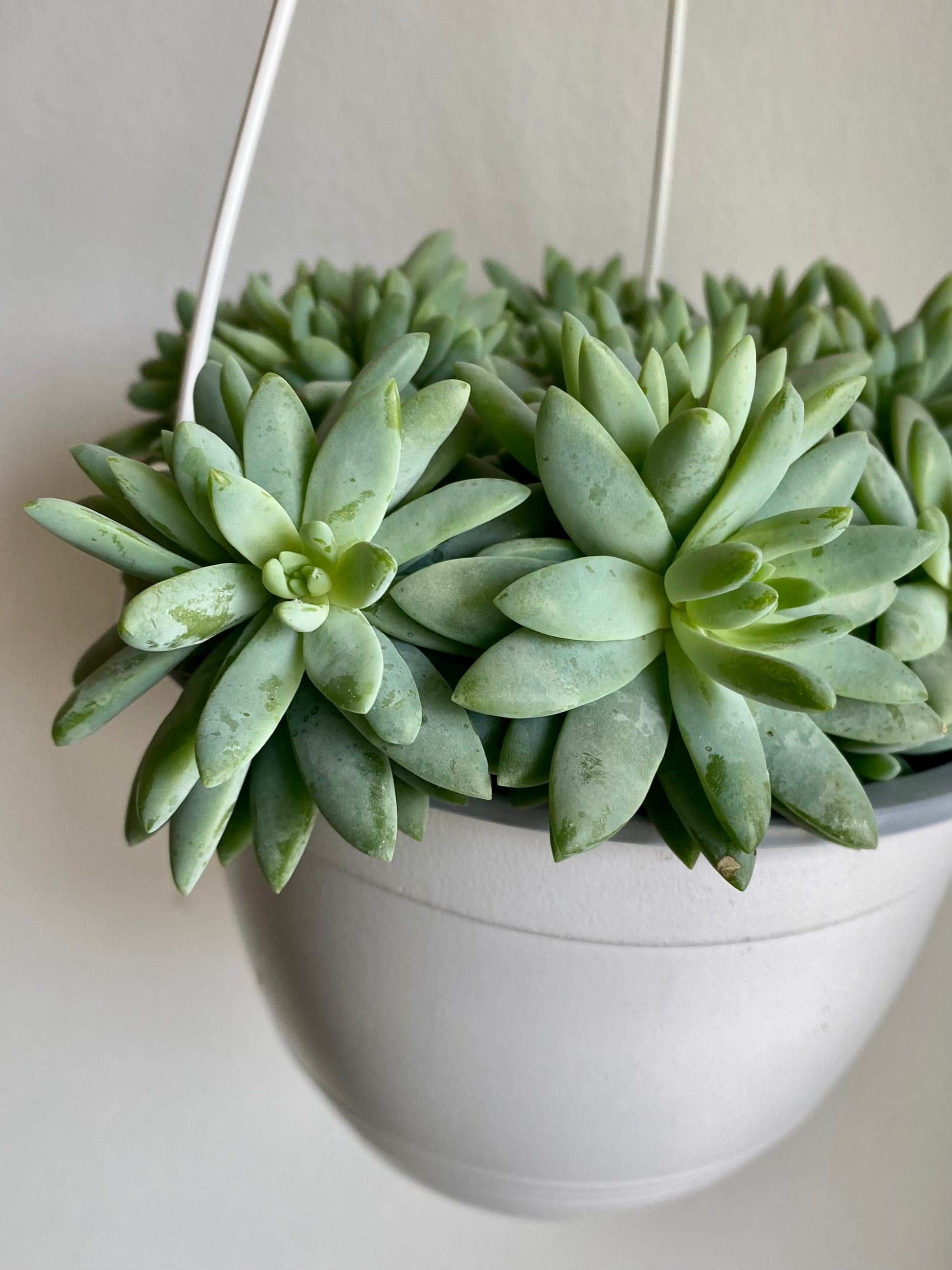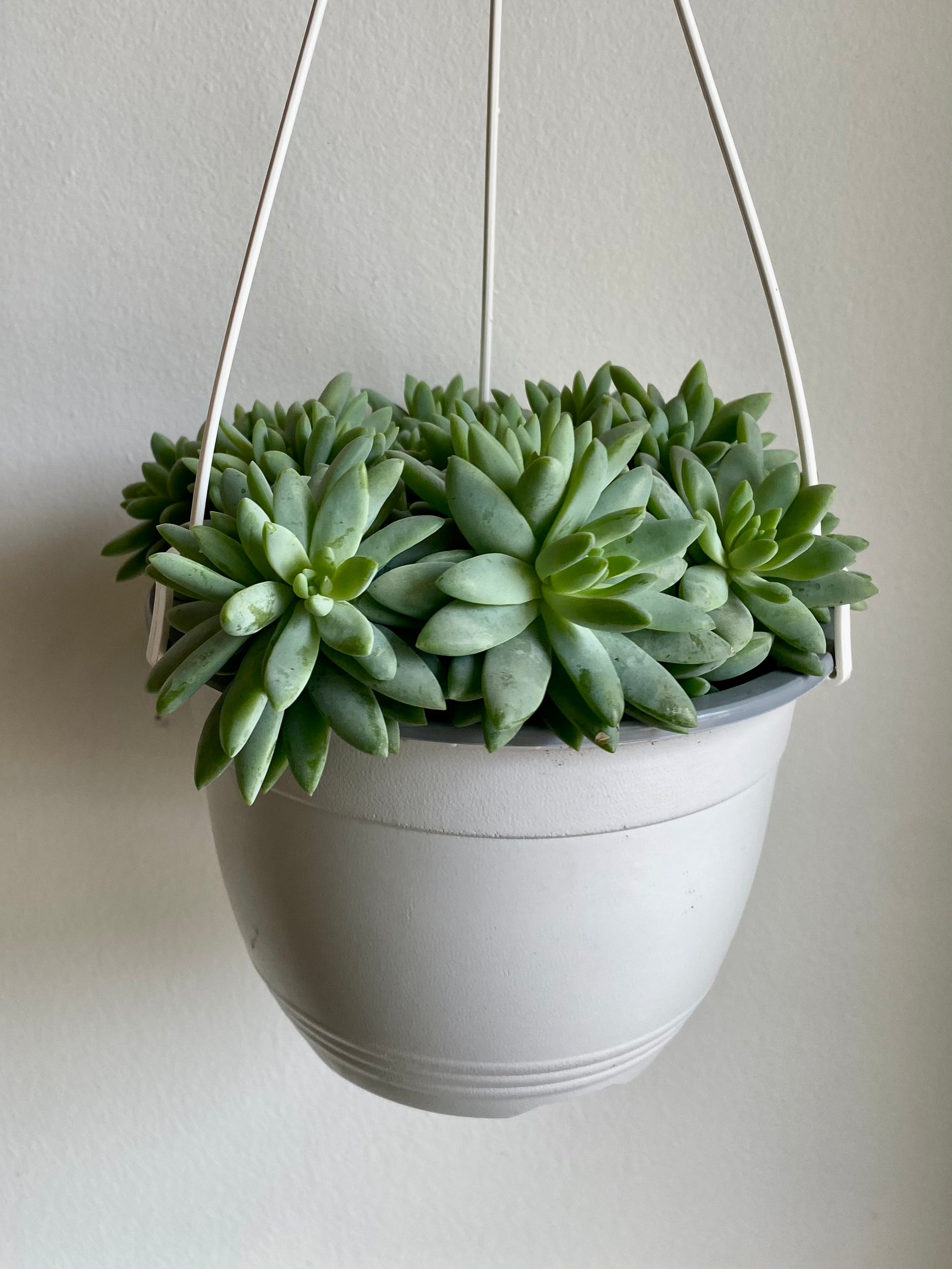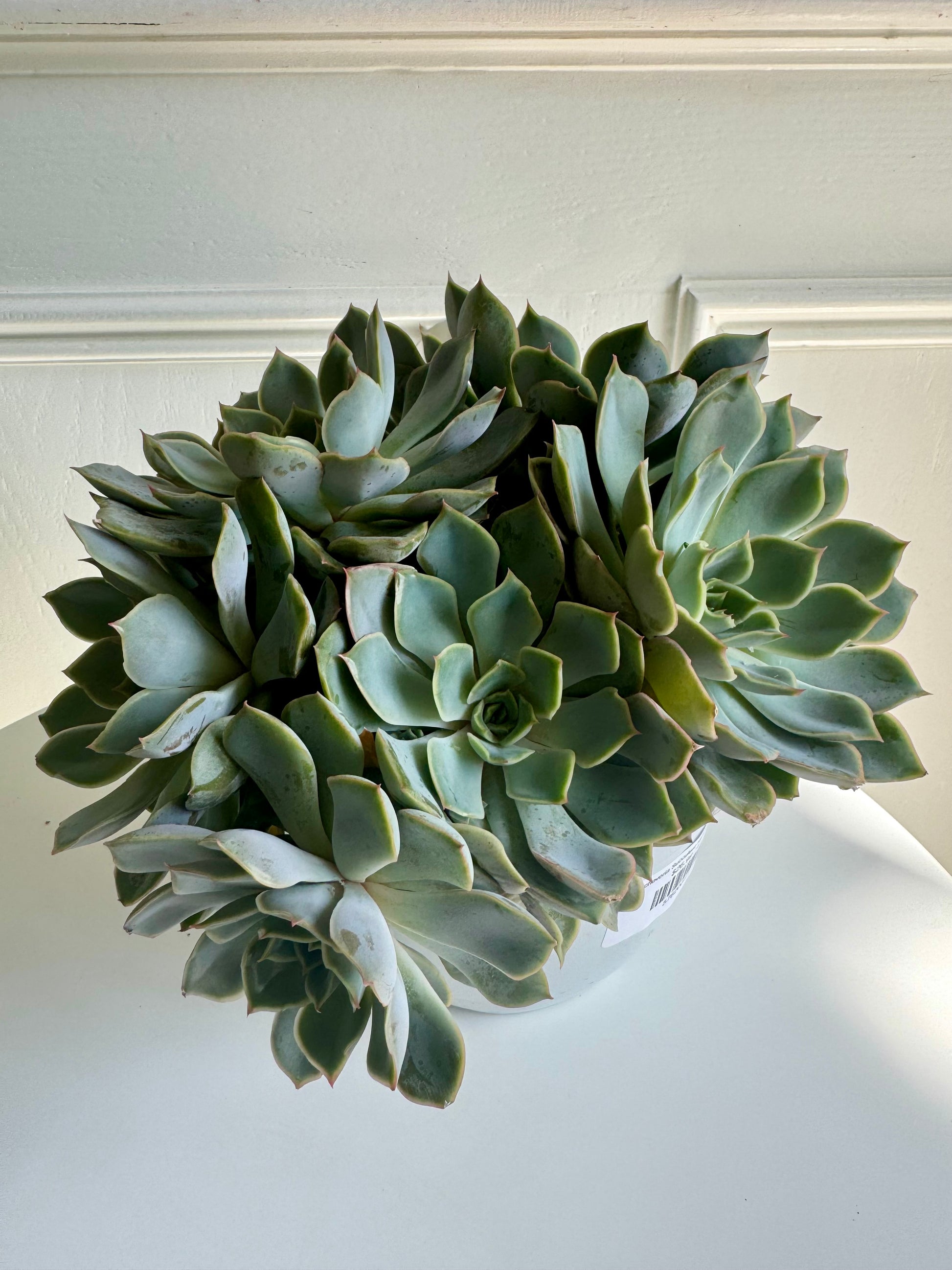Echeveria Succulent Hanging Basket
Echeveria Succulent Hanging Basket
Couldn't load pickup availability
Echeveria is a genus of succulent plants native to semi-desert regions of Central America, Mexico, and South America. They are widely cultivated for their attractive rosette-shaped foliage and vibrant colors. Here are care instructions and some information about Echeveria succulents:
-
Light: Echeverias thrive in bright, indirect light. They can tolerate some direct sunlight, especially in the morning or late afternoon, but intense, prolonged sunlight may cause sunburn or leaf damage. Indoors, place them near a south- or west-facing window where they can receive ample sunlight.
-
Watering: Echeverias have typical watering needs for succulents, which means they prefer infrequent but thorough watering. Allow the soil to dry out completely between waterings, and then water deeply, ensuring that excess water drains away freely from the pot. Avoid overwatering, as this can lead to root rot and other issues. In winter, reduce watering frequency as the plant's growth slows down.
-
Soil: Use a well-draining potting mix formulated specifically for succulents or cacti. A mix containing perlite, coarse sand, or pumice will help ensure good drainage and prevent waterlogged soil, which can be detrimental to Echeveria plants.
-
Temperature and Humidity: Echeverias prefer moderate temperatures ranging from 65°F to 75°F (18°C to 24°C). They can tolerate higher temperatures but may suffer if exposed to prolonged periods of extreme heat. These succulents are not frost-tolerant and should be protected from freezing temperatures. Echeverias are adapted to low humidity environments, so they do not require high humidity levels to thrive.
-
Fertilization: Feed Echeveria plants with a diluted, balanced liquid fertilizer formulated for succulents during the growing season (spring and summer) about once a month. Reduce or eliminate fertilization during the fall and winter months when the plant is dormant.
-
Potting and Repotting: Echeverias have shallow root systems, so they do not require large pots. Choose a pot with drainage holes to prevent waterlogging. Repot young Echeveria plants annually in the spring to refresh the soil and provide room for growth. Older plants may only need repotting every two to three years.
-
Pruning and Maintenance: Remove dead or dried-up leaves regularly to maintain the plant's appearance and prevent rot. You can also propagate Echeveria plants from leaf or stem cuttings, allowing you to grow new plants.
-
Pests and Diseases: Echeverias are relatively resistant to pests and diseases, especially when grown in well-draining soil and provided with proper care.
Share
